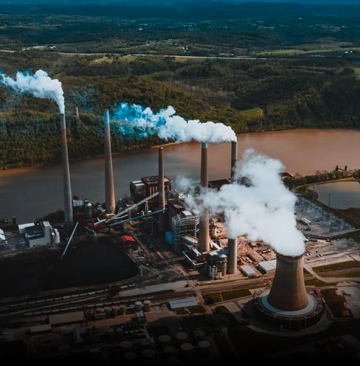Predicting rainfall-induced landslides becomes easier for all
Research led by the School of Environmental Science and Engineering (ESE) at Southern University of Science and Technology (SUSTech) had discovered new mechanisms for predicting landslides related to intensive rainfall.
ESE Founding Dean Chunmiao Zheng has cooperated with the Swiss Federal Institute of Technology Zurich (ETH Zurich) to develop a new model for simulating rainfall-induced landslides. This model combines catchment hydrology (flow of water in the catchment) and soil mechanics (mechanical properties and behaviors of soil) to investigate how rainfall intensity temporal patterns affect where a landslide may occur, where it is expected to go, and how it evolves. The outcomes of this research are of significant importance, both practically and scientifically, for predicting geological disasters.
High-impact journal Geophysical Research Letters (IF = 4.58), a leader in Earth sciences, published the paper under the title, “Rainfall Intensity Temporal Patterns Affect Shallow Landslide Triggering and Hazard Evolution.”
Rainfall-induced landslides are severe natural disasters that frequently occur around the world, causing significant losses to human life and properties. Rainfall-induced landslides are associated with rainwater infiltration that may load and weaken soil mantle and lead to a sudden mass soil release, also known as a landslide. The rainfall intensity temporal patterns may affect the rainfall infiltration process and soil mechanical responses to rainfall loading. It continues to exert a tremendous influence on landslide dynamics and hazard evolution.
Previous research often focused on the role of rainfall duration and average intensity on landslide initiation, neglecting the effects of rainfall intensity temporal patterns on landslides. Chunmiao Zheng and his team addressed the question of: “How rainfall intensity temporal patterns affect landslide triggering and hazard evolution?”
The researchers first employed a stochastic process simulation technique to generate artificial time series of rainfall intensity with different temporal patterns but the same volume of rain over the same period. Then, they used these artificial rainfall time series as input for a novel Landslide Hydromechanical Triggering (LHT) model to simulate the landslide triggering and hazard evolution under different rainfall scenarios.
The results showed that rainfall intensity temporal patterns alter the total amount of rainfall infiltration into the soil and affect soil mechanical strength and behaviors. It resulted in a wide range of landslide volumes, even though the total applied rainfall amount and duration are the same (Figure 1).
Figure 1. Rainfall intensity temporal patterns affect total amount of rainfall infiltration and landslide volume
The team also discovered that advanced rainfall pattern (peak rainfall intensity occurring at the beginning of a rainfall event) are more likely to promote landslide initiation, compared with delayed rainfall scenario (peak rainfall intensity at the later stage of rainfall) (Figure 2). These results not only yield insights into the triggering mechanisms of rainfall-induced landslides but also provide a scientific basis for establishing regional landslide warning systems.
Figure 2. Dynamic evolution of landslide hazard under different rainfall dynamics
The first author and corresponding author of the paper was ESE Research Fellow Dr. Fan Linfeng. Other key centers involved in this research were the Guangdong Provincial Key Laboratory of Soil and Groundwater Pollution Control, the State Environmental Protection Key Laboratory of Integrated Surface Water-Groundwater Pollution Control, and the Soil and Terrestrial Environmental Physics (STEP), Institute of Biogeochemistry and Pollutant Dynamics (IBP), ETH Zurich.
The research received support from the National Key R&D Program of China, the National Natural Science Foundation of China, and the State Environmental Protection Key Laboratory of Integrated Surface Water‐Groundwater Pollution Control of China.
Paper link: https://agupubs.onlinelibrary.wiley.com/doi/abs/10.1029/2019GL085994
